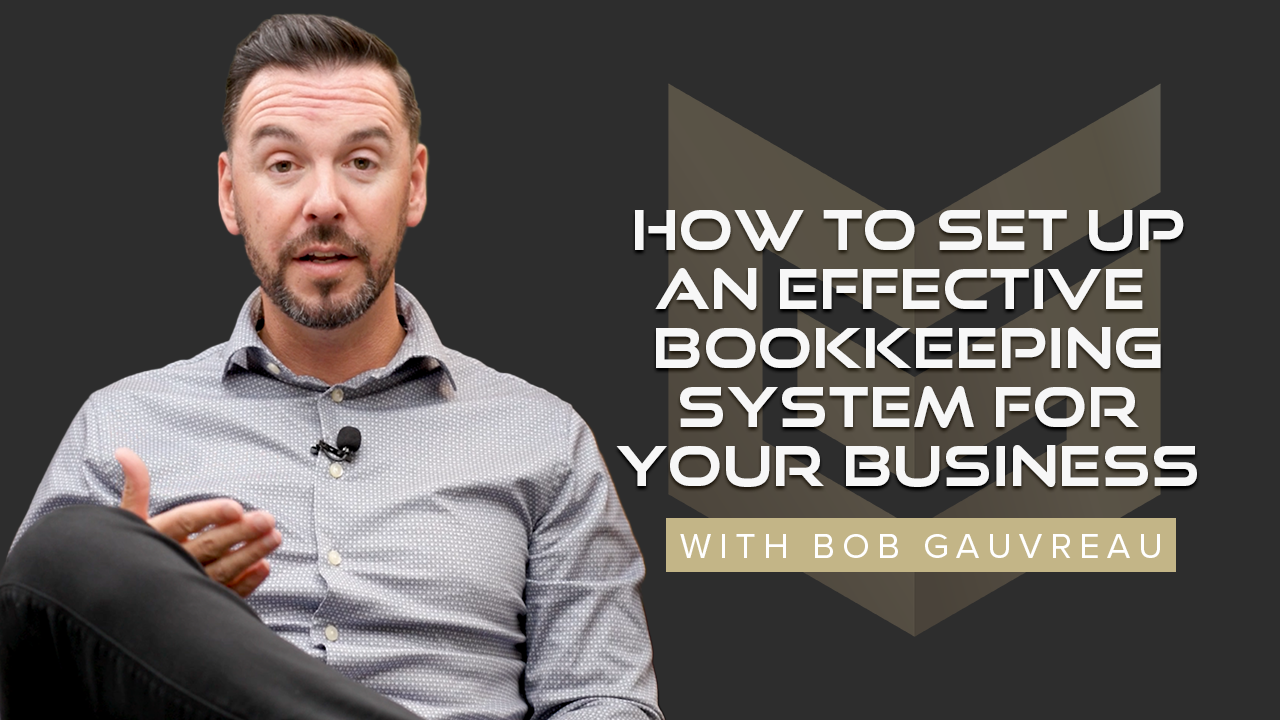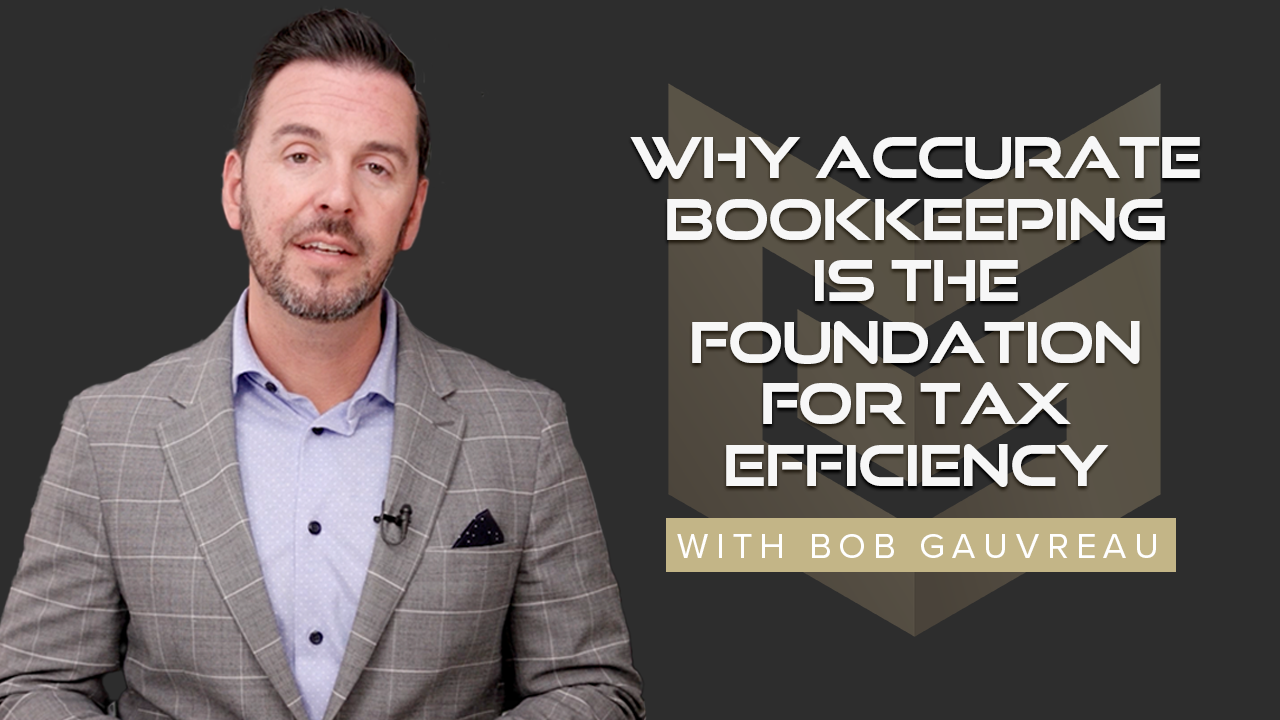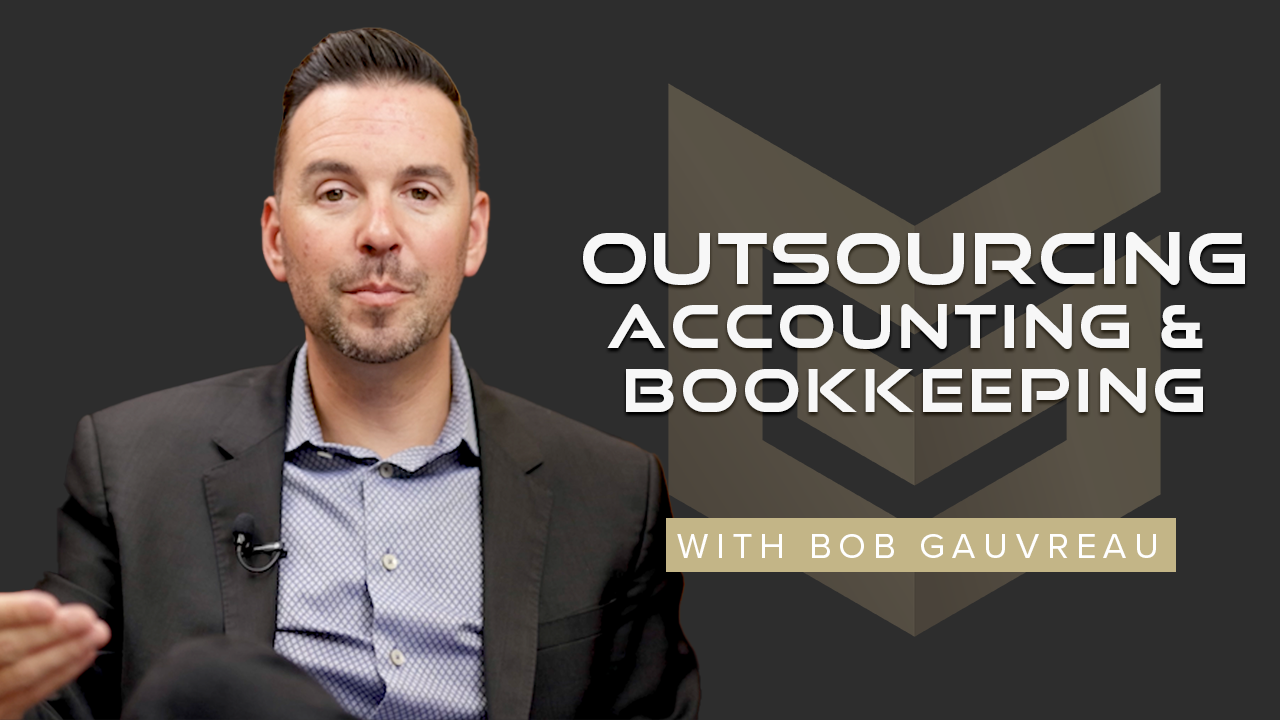How to Set Up an Effective Bookkeeping System for Your Business
One of the most common questions I hear is, "How do I set up an effective bookkeeping system for my business?" If you already have a...
11 min read
 Gauvreau Accounting Tax Law Advisory
Jul 19, 2023
Gauvreau Accounting Tax Law Advisory
Jul 19, 2023
So, here are some basic bookkeeping terms that you need to understand.
Accounting period:
Essentially, with an accounting period, there are two ways to look at it as a balance sheet. Looking at your assets and liabilities, the period is really as of one day. A balance sheet can only be reported one day, so it's as of this date. For example, February 28th, it's as of that day. Here's your listing. We can also do it on December 31st. So there's no period. It's an as-of-date. For an income statement, you claim it as a period of time. So for an income statement, you can say how much money are we earning for this period? Usually, it's annual or quarterly, or monthly. But we need to understand that there's going to be a difference between them. Balance sheet as of date. Income Statement during a period of time.
Accounts payable:
Accounts payable are what businesses owe to their vendors, their suppliers, and any trades payable. Accounts payable could also include credit card liabilities. Essentially, anything that you owe to somebody is in accounts payable.
Accounts receivable:
On the other hand, accounts receivable is the exact opposite. It's work that you've done for somebody, but you didn't collect cash at the time of the transaction. Essentially, you gave them credit for the service or the product that you're providing, and you're going to collect money after the fact. If you have an option inside your business to eliminate accounts receivable, it's going to be the best thing you can do for your cash flow. But if you do have accounts receivable, one of the things you should do is aggressively go after and collect that money because people owe it to you. So accounts receivable is something very important to understand.
Asset:
An asset is something you own, something that has a future value. So, for example, a computer, it has its fixed. You can see it, you can touch it, and it essentially has value in the future because you're going to use the computer until it's no longer usable. There are other assets, though, that are intangible. So you think of goodwill, trademarks, and items that someone would pay you for, but you can't reach and touch them. They're still a type of asset. So there are tangible assets you can touch and feel, and there are intangible assets, the ones that you can't see or feel, but people are willing to pay for them.
Billing:
Billing is one of the most important things in businesses, especially in small businesses. One of the things that I see very often is that people will do the work and not send invoices out for it. Sending your invoices out and collecting money is related to your billing process. One of your primary focuses. And if you have an internal bookkeeper or an admin person, make sure they're getting their invoices done. We need to make sure we're sending invoices out for the work that we're doing. Again, this is a huge mistake that I see a lot of small businesses do. They continue to offer products and services and they say, "We'll just invoice later." No, we need to do it at the time of the transaction. Even better is if we're sending out an invoice and collecting payment all at the same time. Think of a dentist, for example. You don't go into the dentist's office, and they just say, "Oh yeah, pay us later." No, you're paying on the way out the door, so they're billing you, and you're paying. The closer we can get from cash transactions to invoice dates, the higher likelihood that you're going to collect that money. That's a super important function.
Income Statement:
An income statement is essentially a report that shows the revenue and expenses for a certain period of time. For example, if I'm buying and selling cameras, I'm essentially buying that in one period, and I'm selling it in likely the same period. I'm going to match those up—the cost or the amount that I charge less the cost of it is gross profit. It shows us how much money we're making during a period of time.
Balance Sheet:
A balance sheet on the opposite side is a listing of all your assets and liabilities. So anything that you own and everything that you owe will be reported on a balance sheet again at a single period in time. What assets and liabilities do you have as of a set date?
Inventory:
Inventory is an item that you essentially buy and resell, so it's something that costs you money upfront. You can either pay cash for it, or you can owe somebody for it, and you're essentially buying this because you want to sell it at a higher value. This is a key component. Again, a big weakness that I see in a lot of small businesses is that you have inventory, but you're not charging enough. You're not making enough of a premium on reselling it. That's how you generate profit and make more money. So we have to make sure that when we buy inventory, we're setting it up so that we can make as much money off of that inventory as possible when we resell it.
Liabilities:
Liabilities are essentially something that we've incurred, and we owe somebody money related to it. So whether it's employees that we owe for the time that they spent working for us, and we have to pay them on payroll, whether it's a credit card, we've incurred costs there, whether it's a government amount where it's sales tax or its income tax, something that we owe money on. Those are all liabilities, long-term debt, all liabilities, all things that we owe someone for because we received a benefit in exchange for that debt.
Margin:
Margin is the difference between the amount we're charging and the amount that we've paid. For example, I'm in the accounting world when I think of doing an income tax return for somebody, I'm paying my staff all the labor to pull that together, and I'm charging a client an amount for that service. The margin is the difference between the amount I charge and the amount that I the cost that I've incurred.
A Loss:
A loss is something we don't want to be familiar with, but I'm going to share that anyway. A loss is when you've essentially bought something and you sold it for something less than what you paid for it, whether it's a building, for example, you pay $1,000,000 for a building, you sell it for $900,000, that's a loss of $100,000. If you have a piece of inventory, let's say it's a pair of shoes, you buy the shoes for $40, they don't end up selling, so you sell them for $30 - that's a loss. We don't like losses, but we want to be familiar with them so that we know what to do to avoid them altogether.
A Budget:
A budget is something that we set up as a pre-established benchmark of what we're trying to accomplish. A budget is probably one of the most underutilized functions inside a business. When you can set a benchmark to say, "I want to hit $1,000,000 this year," and you're going to track your actual results according to that budget and see if you're on track or not. So, a budget is setting pre-established outcomes that you want to try and hit. Also, from a budget standpoint, you can set up targets that say you can't spend more than $500 on professional fees or $1,000 on insurance. These are all budgeted amounts again so that we can see what the outcome is going to be beforehand. Essentially, we're trying to achieve a bottom-line outcome. Let's set up pre-established outcomes and measure them against that.
Capital:
Capital is essentially, well, it could be looked at in a few different ways. Capital can be pulling in money to be able to fund something. For example, if you're a small business corporation, and you want to bring on partners, you can acquire capital. They give you cash to buy into the company that will allow you to fund the growth of your business. Capital on another standpoint is looking at assets that you're acquiring inside your business. So I need capital to buy new trucks. I need capital to buy new equipment. I need capital to buy a new building. And those are all considered capital assets, tangible assets that have a future value. So there are a few different ways to look at the term capital.
Cash Flow:
Cash flow is the biggest term. If you need to take away anything, take away cash flow. Cash flow is money in minus money out; it doesn't always equal profit. So sometimes people go, "Oh, I made $100,000 this year, Bob, but I have no cash left." That's because cash flow doesn't equal profit. If you are a business that made $100,000, but you didn't collect the money from everybody you provided products and services to, you might have zero cash flow, but you might have $100,000 in profit. So, understanding how your cash flow is impacted is probably one of the most important lessons of running a small business. It's also the highest reason that businesses fail because they run out of cash resources.
Creditors:
Creditors are people that you owe money to. So it could be your accounts payable essentially who you owe money to for your accounts payable. They're your creditors. Those are the ones who are essentially looking to you to pay them for what you owe them. Debtors are very similar. So anybody who you owe money to is your debtor. So you're going to have to pay them at some point. They're essentially a debtor for you.
Deductible:
This is one of the questions that I get all the time around Income tax, which is deductible as a business expense. So ultimately, and if you've ever watched the Seinfeld episode where they talk about a write-off, a deduction, a write-off is essentially a business expense that we can utilize to draw up our taxable income. A lot of items are deductible. There are a few items that aren't necessarily deductible, like life insurance. 50% of our meals and entertainment, and golf dues are expenses that we pay, but they're not deductible for income tax purposes. So just be cautious of those.
Depreciation:
Depreciation is the value we get as a tax expense that is going to end up being a deduction. But it's just taking an element, a percentage of an asset value, and claiming it as a deduction during the year. So a good example is buying a new vehicle, buying a new vehicle, you get a 30% depreciation, buying a $100,000 truck, heavy machinery that's 100% used for business. You can claim a 30% deduction in that year or a $30,000 deduction. That doesn't mean the value of the vehicle is dropped. It just means we get that as a tax depreciation number inside our business that year. Depreciation is every accountant's best friend because it's a great way for us to bring down taxable income.
Equity:
So equity inside a business can be looked at in a few different ways. Equity can be looking at share capital. So how many shareholders are in a business? It can also be looked at as retained earnings. So retained earnings mean the money that you've made from day one inside your business, the profits that have been in there, if you've made $100, did you distribute any of those earnings to the shareholders, or did you leave it inside the company? You left it inside the company. It's retained earnings that you've had previously, and it's also considered part of the equity of the business. The more money we leave in, the more shareholders that we bring in to contribute dollars to the company. That is equity. Equity is a good thing. The banks love equity inside your business.
Expenses:
Expenses are essentially deductions inside your business. And I'll give you a general rule of thumb for expenses. Anything that you spend money on inside your business that's helping you generate future revenue, whether it's meals and entertainment, it's paying for an office supply, it's a professional fee, whatever it is, you're spending money, and it's a legitimate business expense to help your business make more money in the future. It's an expense.
Financial Statement:
So, financial statements are essentially the package of everything. So a balance sheet, a statement of retained earnings, or a statement of owner's equity, or statement of partnership equity, and a profit and loss statement. Most accounting firms don't include a statement of cash flows as part of this; we do because we know how important cash flow statements are to the small business. So when we talk about financial statements, we also include a statement of cash flow, which is super important for a business to understand the difference between a profit and loss and a statement of cash flows. But all of those together are considered financial statements.
General Ledger:
In general, a Ledger is something that, you know, it almost seems funny because 20 years ago the general ledger would have been written in a green book that had margin lines and everything was getting totaled up really rapidly. Now all of us are predominantly using accounting software like QuickBooks Online. The general ledger is in the background, tracking all of the numbers that go through the business. So the general ledger is every single account, every single transaction that happens during a period of time, it's being captured inside that general ledger. You're never going to have to look for a general ledger. The accountants are the ones who are looking through the details in there to make sure all the numbers are in the right spot.
Overhead:
When we think of a profit and loss statement, we think of things that we're selling and we're buying or the cost of delivering anything we sell, those are essentially considered variable expenses or cost of goods sold or anything like that. Overhead or more of the fixed expenses that we have in our business. So not directly related to selling what we offer our products or services, but overhead is those indirect items like our insurance and our rent. Yes, we need to incur those expenses, but they aren't being incurred on an individual sale level. It's just more of an overhead perspective. Right? That's what overheads are.
Payroll:
Payroll is when we have employees, not subcontractors. Subcontractors are completely different. Those are people who are not full-time employees in our business. But payroll is when we're hiring an individual, we're making source deduction remittances on their behalf. We're paying into their Canada pension plan or their other payroll-related remittances. That's what payroll essentially looks like. They're an employee who works for you. You bear the risk of them, and they're hopefully going to be with you for a long time.
Profit and Loss:
That's essentially a report, again, an element of the financial statements that shows the income and expenses related to the business for a period of time. So anything revenue is what you've charged, a product, or service coming in, expenses are anything you've paid for on the way out.
Reconciliation:
Reconciliation is a great term for most bookkeepers to understand. Essentially a reconciliation is when we look at a bank, for example, and we see all the transactions that have gone through the bank account, well, we may have written a check during that period that didn't get cashed, right? We wrote a check for $100 and the person we sent it to didn't put it in their bank account yet. So inside our general ledger, we've got this check that's written for $100, but it didn't match the bank statement. A reconciliation is looking at those the general ledger and the bank statement matching them up and making sure that everything that should be in there is recorded and anything that is recorded in there should be there. It's a match, it's a check. Any bookkeeper in a small business needs to understand that.
Revenue:
Revenue is essentially what you're charging for your products and services. So anything that you're selling, again, a product or service, the price times the quantity equals your revenue. The revenue is probably the largest driver inside your business. If you can't generate enough revenue, you're likely not in a sustainable long-term business.
A Write-Off:
A write-off is essentially a deduction inside your business that you get to claim on your tax return to make sure that your income gets dropped and to reduce your tax liability.
Year-End:
And the last one I'm going to throw in here is year-end. So your year-end is essentially the end of a period of time. So typically, a lot of businesses are 12 months year-end. A lot of times it's a calendar year from January 1st to December 31st. But in some areas, you can elect to change that period of time; it's always going to be a 12-month period. So your year-end is the final day of that 12-month period. Think of that as your December 31st. That is your year-end date. And then after that, you're going to be going and creating financial statements and tax return filings for that period of time, for that year-end date.
Hopefully, these terms have all resonated with you. They are invaluable to understand. The more you can understand these terms, the better position you're going to be in your business as a position of success.
If you're ready to take your bookkeeping to the next level and want professional assistance, click the link below to visit our website to get in touch with our team. Whether you need help setting up a bookkeeping system, optimizing your financial processes, or ensuring compliance, our experts are here to provide you with the support you need.

One of the most common questions I hear is, "How do I set up an effective bookkeeping system for my business?" If you already have a...

When it comes to paying less tax and keeping more of your hard-earned money in your business, one thing matters more than anything else: ...

In today's fast-paced business environment, it's crucial to ensure that your financial records are accurate, timely, and insightful. This...